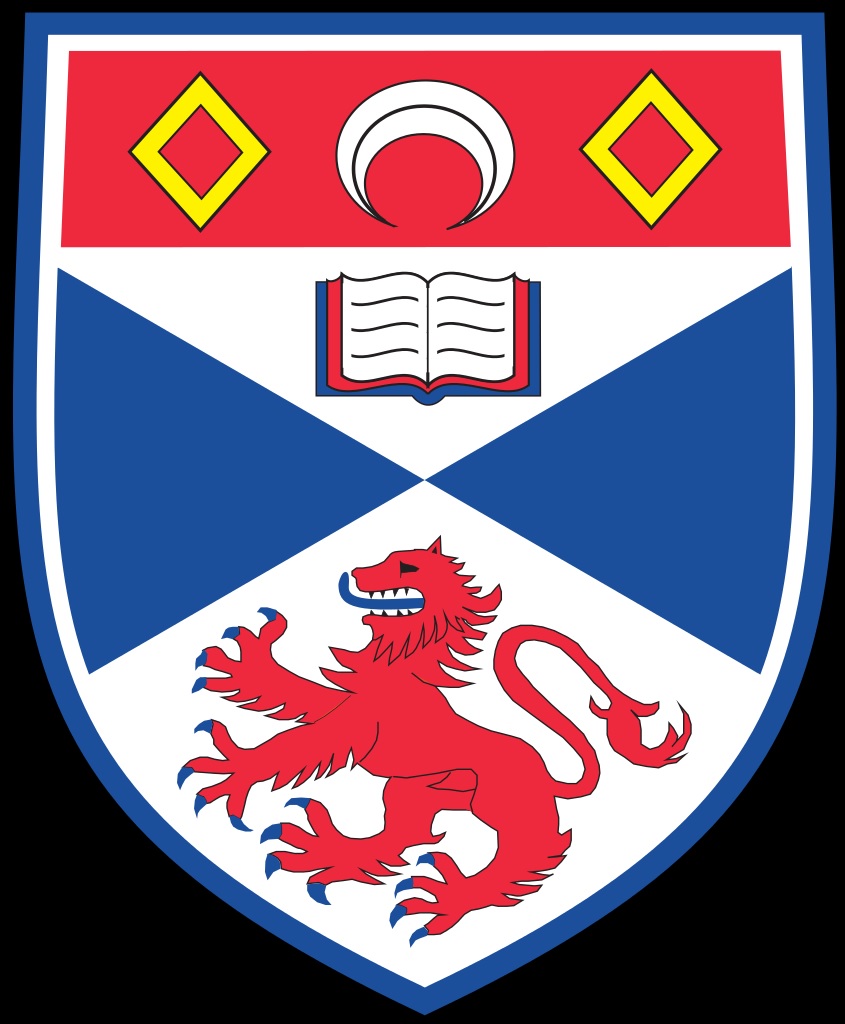21 September 2017
Fiona MacLeod
01334 462108/07714 140 559
fm43@st-andrews.ac.uk

The NSs protein of RVFV forms characteristic filaments (green) in the nuclei of infected cells (red): a three-dimensional structure of a fibrillar assembly of NSs, determined by Barski et al using X-ray crystallography (green) is shown on top of an image of three infected cells. Image credit: Ben Brennan and Uli Schwarz-Linek.
Researchers at the Universities of St Andrews and Glasgow have made a significant step forward in tackling a viral disease which causes frequent epidemics in Africa and could spread to Europe due to global warming.
Dr Michal Barski and Dr Uli Schwarz-Linek of the School of Biology at the University of St Andrews, with colleagues at the University of Glasgow, have published a paper in online journal eLife revealing new information about a key molecule used by the virus to cause disease, which could help to eventually find a cure or a vaccine.
Rift Valley fever phlebovirus (RVFV) is a virus affecting humans and livestock which is transmitted by mosquitos and contact with infected animals. RVFV is increasingly likely to cause widespread epidemics, and could potentially follow the pattern of Dengue virus or West Nile virus and spread to temperate regions, such as Europe or the USA, as global warming allows the mosquitos which carry the virus to extend their geographic range.
Infection can cause severe disease, including haemorrhagic fever, and may lead to death. Historically, the virus was only found in central Africa but has spread to the Arabian Peninsula. There are no vaccines or treatments available for use in humans so if there is a serious outbreak of the virus it could become an epidemic and cause great economic loss and severe human disease.
The research team combined two techniques, NMR spectroscopy and X-ray crystallography, carried out at Diamond Light Source, to study the atomic three-dimensional structure of NSs – a key molecule of the RVFV virus which assembles into large fibres inside infected cells.

The virus relies on NSs to cause disease but the mechanism behind this process, and the formation of the fibres, have not been fully understood. The structure of this molecule revealed that only the central part, or core domain, of the protein is needed for the fibres to form. Further experiments identified how NSs molecules come together to build the fibres inside the infected cells.
Dr Schwarz-Linek said: “The structural insights we generated will help to unravel the complexity of Rift Valley fever. It will pave the way for research on Rift Valley fever phlebovirus and many other related viruses that have the ability to infect animals and humans.”
Dr Barski added: “With this research we have opened up a new avenue for understanding Rift Valley fever virus and hopefully also for developing therapy targeted at this virus. The recent, sudden epidemics of Ebola virus and Zika virus have highlighted the need to understand dangerous tropical viral diseases which could quickly spread to far away places. Rift Valley fever is on that very short list of viruses which might cause large epidemics next.”
These findings mark an important step towards understanding how the NSs protein helps RVFV to cause disease in humans and livestock. In the future, this work may aid the development of much needed drugs and vaccines against RVFV.
Earlier this year the World Health Organization ranked RVFV among the ten most dangerous pathogens most likely to cause wide epidemics in the near future, requiring urgent attention.
See the full article here .
Please help promote STEM in your local schools.
St Andrews is made up from a variety of institutions, including three constituent colleges (United College, St Mary’s College, and St Leonard’s College) and 18 academic schools organised into four faculties. The university occupies historic and modern buildings located throughout the town. The academic year is divided into two terms, Martinmas and Candlemas. In term time, over one-third of the town’s population is either a staff member or student of the university. The student body is notably diverse: over 120 nationalities are represented with over 45% of its intake from countries outside the UK; about one-eighth of the students are from the rest of the EU and the remaining third are from overseas — 15% from North America alone. The university’s sport teams compete in BUCS competitions, and the student body is known for preserving ancient traditions such as Raisin Weekend, May Dip, and the wearing of distinctive academic dress.

